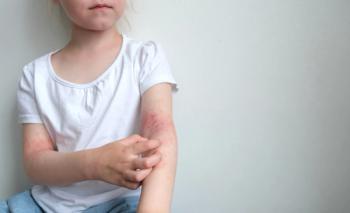
Are Telemedicine and Atopic Dermatitis a Good Fit?
A review of published research identified only five studies. They showed that telemedicine, particularly for follow-up care, was as effective as in-person care in many respects
The world suddenly seemed to wake up to the advantages of telemedicine during the COVID-19 epidemic, especially during the initial months of 2020 that featured lockdowns, deaths and hospitalizations from the disease and no vaccine
Now evidence-minded researchers are researching the utilization and outcomes associated with telemedicine to sort out when, where and how it might be best applied. Dermatology certainly seems like a strong candidate for telemedicine because a cellphone’s digital camera can capture and send an accurate likeness of a rash and other skin conditions. Teledermatology has also been held out as possibly being a way to increase access to dermatologists, especially in rural areas.
Corresponding
Dytoc and her colleagues sifted through several databases of medical research (Medline, Embase Cochrane trials, Scopus) to identified studies of telemedicine and atopic dermatitis. Somewhat surprisingly, they found just five studies to include in their review, four randomized controlled trials and one retrospective cohort study. All of the research was conducted before the COVID-19 epidemic, so it wouldn’t reflect the growing familiarity and acceptance of telemedicine by both patients and clinicians. All of the studies included in the review used a “store and forward,” asynchronous form of telemedicine.
Among the studies that Dytoc and her colleagues identified was a 2015 study published in JAMA Dermatology that showed a direct-access online model for follow-up care of atopic dermatitis was just as effective as in-person visits. Similarly, a 2017 study published in Telemedicine and e-Health showed that adult and pediatric atopic dermatitis patients managed through a direct-access online model had the same quality of life as those seen in-person. Years before the pandemic, physicians in the dermatology department of the University Medical Centre Utrecht in the Netherlands developed an e-health portal for patients with atopic dermatitis, consisting of e-consultation, a patient-tailored website, monitoring and self-management training. When they tested it in randomized trial, they found that after initial diagnosis and treatment, the e-consultation was just as effective as in-person care with regard to disease and quality of life and meant patients didn’t mean to work miss work (which they calculated as an indirect savings of 594 euros during the first year of treatment). Those results were published in the British Journal of Dermatology.
“Diagnosis can be more challenging, especially with the inability to conduct a full physical examination,” wrote Dytoc and her colleagues, adding, though, that for follow-up care “teledermatology can be beneficial for monitoring the patient’s condition over time and adjusting treatment plans as necessary.”
They acknowledge the small number of studies and said the heterogeneity of the care assessed in the studies prevented them making specific recommendations.
Newsletter
Get the latest industry news, event updates, and more from Managed healthcare Executive.


















































